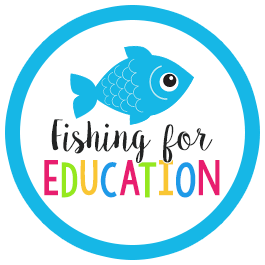I'm certainly not an expert, but after 4 years in prep and this year with a grade 2/3 I've taught a few kids who need something extra during the day.
For calming down
Lots of students, at sometime, need some help to calm down, for a huge range of reasons.
Some tools I've used to help students calm down are shown above. Students (and teachers!) love the feeling of squishing and rolling play dough - the tactile feeling is great. Puzzles help students to focus their attention on something new, and the structured task can help with uncertainty. A bowl of buttons is fun to move your hands through, to find matching buttons, to sort the buttons, or to explore the different colours and textures. Bubbles can be used to help students manage their breathing when they're upset/frustrated/overwhelmed. I love the feelings characters from the film Inside Out to help verbalise how students are feeling, and the calming bottles (also called brain bottles, glitter jars, etc) are great for focusing students' attention, slowing their breathing and talking about how their brain is feeling when it is all shaken up.
Fidgeting during teaching time
I've definitely had a few students who need something in their hands during learning time. They need to fidget and wriggle their fingers to keep their minds focused.
I love having a range of fidget tools. So do my students. In my room I have a mini shopping basket (I bought it from Daiso) that holds a range of fidget tools that particularly students can choose from. Every now and then I let all of my students choose a fidget tool, so that they aren't a secret or something students are jealous about. I have made a couple of cushions with buttons sewn on, which are great to fiddle with, and not hard to make. I bought lots of my fidget tools from the $2 Shop (like a Dollar Store), including plastic dinosaurs, soft hairbands, stress balls and sponges - lots of different textures and materials. A very easy option is to use manipulatives that you have around the room, like the tens or hundreds pieces from an MAB set. My newest, and new favourite, fidget option is my sensory bag. My mum created a set of 10 for my school so that each classroom has one. Inside the little pouch are 20 little square pillow-type things made with different materials - from fur and velvet, to satin, rubber and a chopped up textured placemat. Students love exploring the different textures!
Activities
I also love using sensory activities in my teaching.
Lots of teachers use rice/pasta/other sensory tubs - and I love them too! I've put lots of tasks in sensory tubs, including magnetic letters for matching activities and task cards. There are heaps of ideas out there to inspire you to use sensory tubs. The other photo above was an activity that some of my amazing colleagues did to discuss the brain and growing neurons/dendrites in your brain as you learn - the plasticine and the pipecleaners added a fantastic sensory task to this tricky subject - and they were teaching preps (5/6 year olds)!
A few other ideas
There are lots of other ideas out there, these are just the ones that I've tried and loved.
Some other suggestions from my fellow Australian Teachers Blog Collaborators are: chew tubes, body socks, breath books, headphones, weighted blankets & vests, pressure vests, hats/footy headgear, chewing gum, body brushes, pimple/textured cushions, slope boards (for feet), ankle weights, mini trampoline, various squeezy/squishy/goo toys.
I hope this has given you a few new ideas of things to try in your classroom. Thanks for reading!




















What a great post - I love the shopping basket idea to keep the items in. How lucky are the kids in your learning space.
ReplyDeletePaula’s Place
What a terrific post Jem with lots of practical ideas. I am going off to share it with my colleagues in the Australian Year Level teachers' FB groups :)
ReplyDeleteThank you
Kylie
http://ripperresources.blogspot.com.au/
This comment has been removed by the author.
ReplyDeleteNice post. thanks for very interesting and essential for us to know more about such topics.Keep up the good writing.
ReplyDeleteTutoring Centre Cranbourne
Your blog is a treasure trove of wisdom, providing readers with enriching experiences.Individuals with color vision deficiencies may struggle to discern certain hues Online Color Blind Test
ReplyDeleteYour post simplified things so well. Appreciate your effort here. See what’s new on the profile of Geometry Dash Online today. One of the best features of Geometry Dash is how the levels sync perfectly with the music, creating a smooth experience.
ReplyDelete